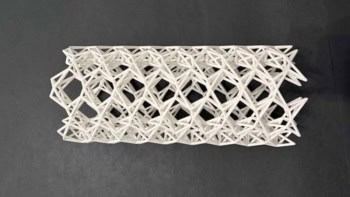The widespread use of superconductors in the distribution of electricity has moved a step closer to reality, following results from three independent research groups which indicate that magnesium diboride could be used in applications that involve both high electric currents and high magnetic fields. The results come less than five months after the surprise discovery that magnesium diboride, a simple compound, can conduct electricity without any resistance.
The transition temperature of magnesium diboride is 38 K – almost double that of any other metallic superconductor. Wires and tapes made from the new compound could therefore potentially be cooled with electrical refrigerators, which are relatively cheap, rather than cumbersome liquid-helium cooling systems. However, in its pure bulk state magnesium diboride cannot superconduct when carrying significant currents or when exposed to large magnetic fields. A magnetic field creates vortices within the material, the cores of which behave as simple conductors. When the magnetic field is high enough the vortices spread throughout the whole of the material and all superconductivity is lost. In addition, current flow moves the vortices, producing friction within the atomic lattice and so creating resistance.
However, such resistance can be overcome by defects in the material, which “pin” vortices and prevent them from moving. Now three teams of researchers have exploited this pinning effect to increase both the maximum or critical current, Jc, that the material can withstand in its superconducting state, and the irreversibility field, H*, above which resistance free currents are no longer possible.
By studying thin films of oxygen-doped magnesium diboride, Chang-Beom Eom of the University of Wisconsin in the US and colleagues obtained values of the irreversibility field that were double those observed in the bulk material (C Eom et al. 2001 Nature 411 558). They also significantly increased the critical current density to 100000 amps per square centimetre at 4.2 K and 10 Tesla. It is thought that the interface between the thin film and its substrate creates pinning defects in this material.
Meanwhile Yury Bugoslavsky of Imperial College in London and the General Physics Institute in Moscow, and colleagues, produced vortex pinning by irradiating samples of magnesium diboride with protons (Y Bugoslavsky et al. 2001 Nature 411 561). This group was also able to double the value of the irreversibility field and observed a much slower reduction in the critical current with applied field at 20 K.
Finally, a group at Lucent Technologies led by Sungho Jin has reported a critical current of 30000 amps per square centimetre at 25 K and 1 Tesla by cladding a sample of magnesium diboride in iron (S Jin et al. 2001 Nature 411 563). The vortex pinning in this case may have been due to the crushing and rolling used to draw the superconducting wire.



